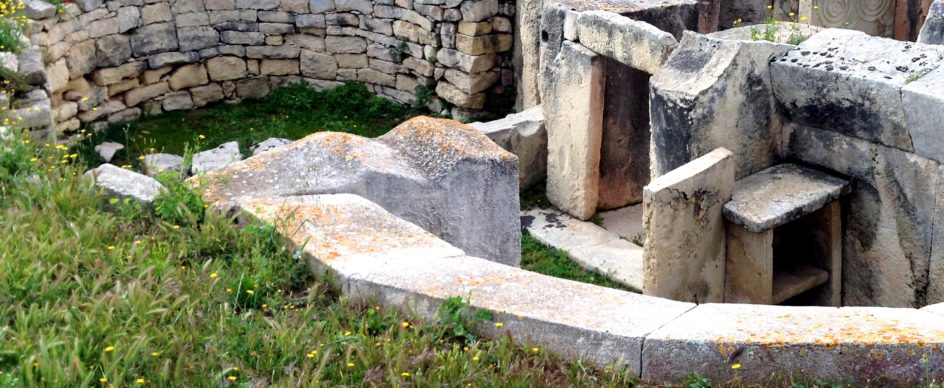
Malta’s Megalithic History
- Apr 10, 2021
...stone artefacts built between 3600 BC & 700 BC
Malta’s pre-history is like no other, as it gave rise to the stupendous megalithic structures that are still standing today. These stone artefacts, built between 3600 BC and 700 BC, pre-date the Egyptian Pyramids and Stonehenge. Their global importance has been recognised by UNESCO, which deemed them as World Heritage Sites.
Ġgantija (Gozo)
This megalithic temple complex in Gozo is the earliest of Malta’s megalithic temples. The two adjacent temples were built during the Neolithic times (3600-2500BC) making them the second oldest still-standing structures after Turkey’s Göbekli Tepe. The complex encompasses two, equinox sunrise-facing structures and an incomplete third. Ceremonial artefacts, such as figurines and statuettes associated with a fertility rite, have been found at the site.
Ħaġar Qim (Qrendi)
Ħaġar Qim was built using the islands’ prime natural resource – the globigerina limestone. This is why it’s more weather-beaten than the others. A trilithon entrance characterises the temple’s stunning facade. This leads to a wide forecourt and a passage that runs through the building. The solar alignments, statues and the imposing monolith are all evidence that this was another temple complex associated with fertility rites.
Hypogeum of Ħal Saflieni (Paola)
This neolithic, subterranean complex sprawls across three underground levels. The Hypogeum is noted for its incredible design and the well-preserved artefacts that were found there – including the world-famous Sleeping Lady statuette. Archaeologists also found the remains of more than 7000 people, leading them to conclude that it served as a necropolis.
Mnajdra (Qrendi)
Located on Malta’s southern coast, Mnajdra is an architectural masterpiece made of coralline limestone. The temple complex is made up of three conjoined temples – the upper, middle and lower – with the upper being the most ancient of the three.
The lower temple is astronomically aligned and is thought to have been used as an observatory. The artefacts found in this complex suggest that it was used for ritualistic purposes.
Tarxien Temples (Tarxien)
This complex dates back to approximately 3150 BC and consists of three temple structures. The temples are noted for their intricate stonework, which features spiral designs, domestic animal depictions and altars. Excavation shows that this complex was most probably used for animal sacrifice, and evidence of cremation indicates that it was re-used during the Bronze Age as a cremation cemetery.
Tas-Silġ (Marsaxlokk)
The hilltop temple complex of Tas-Silġ is a multi-century sanctuary site that spans from the neolithic period to 9 AD. Its rich historical value lies in the fact that it was re-purposed multiple times by different people. The site encompasses a third millennium BC temple complex, a Punic and Phoenician Astarte sanctuary and a Roman Era complex turned international pilgrimage site dedicated to the god Juno. Nowadays, it’s managed by Heritage Malta and can be visited by appointment only.
Skorba Temples (Żebbiegħ)
Skorba is one of the most recent discoveries, as it was excavated in the 1960s, compared to the others, which had been sites of ongoing exploration since the early 19th century. The temple itself is not in good condition, however, its importance lies in the results of the excavation. It appears that there was a pre-existing village on the site before the temples were even built. Deposits at the base of the temple’s oldest structure contained human materials and charcoal dating back to 4850 BC. Furthermore, pottery, as well as the remains of domestic huts where the temple builders used to live (which date back to pre-3600 BC) were discovered on-site.
Enjoy another part of Malta’s history by staying at Casa Ellul – an original Victorian-era palazzo turned boutique hotel. Book now!




